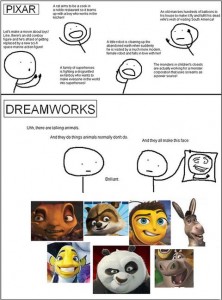Very nice animation of Ira Glass‘ insightful thoughts on the key to success in creative work:
I couldn’t agree more. Of course it is no new knowledge that practice is essential, but I like Glass‘ observation of this tension between one’s good taste (which I understand as being able to recognize great work and bad) and their work which is not quite there yet.
The video is based on an excerpt of a 4 part series on storytelling, which is available on Open Culture.
Via Brainpickings.

